The Google Nexus 9 Review
by Joshua Ho & Ryan Smith on February 4, 2015 8:00 AM EST- Posted in
- Tablets
- HTC
- Project Denver
- Android
- Mobile
- NVIDIA
- Nexus 9
- Lollipop
- Android 5.0
Display
For those that are uninitiated to the world of displays, a display seems relatively simple. After all, it just needs to have high resolution, pretty colors, high brightness, and high contrast. However, there’s a great deal of complexity to this issue. Even excluding the actual structure of a display, the characteristics of a display can strongly affect perception. Poor display calibration, low brightness, high reflectance, and low contrast can all affect the experience. In addition, something as simple as subpixel arrangement and the thin-film transistor design can have significant impacts on viewing angles and battery life.
In order to test these things, we use SpectraCal’s CalMAN 5 Ultimate and X-Rite’s i1pro2 spectrophotometer to ensure accuracy in our testing, in conjunction with subjective testing to get a good idea of overall display performance. As always, we target sRGB gamut and 2.2 gamma as these are the industry standard. While there are many arguments for larger gamuts and different gamma curves, the goal of our display calibration testing is to make sure that a display will be reasonably accurate in its reproduction of content as an artist intended. Without this calibration, videos, photos, and other content can appear "off".
While we still don’t have an accurate reflectance test, I spent a great deal of time wondering why the display on the Nexus 9 seemed to have more distracting glare than most. This was strange to me as the display was obviously laminated with no perceivable viewing angle degradation that comes with non-laminated displays. It seems that whatever material HTC has used to laminate the display isn’t quite ideal in this case, as at some point in the display stack there’s an obvious secondary reflection. This is an issue relating to a lower index of refraction, so it’s likely that some other characteristic was valued over reflectance.
Other than this, the only other immediately noticeable flaw is the display’s backlight bleed. To me, it’s quite obvious that the display gets lighter at the edges much like what I’ve seen on the Nexus 5. It seems that this is related to the backlight configuration, although given the high brightness of the panel I'm not sure that this can be avoided.
Before we get into the objective testing, I also wanted to mention that this display has “dual-domain pixels” similar to the iPad Air 2 and iPhone 6. The level of angling seems to be much more significant though, which seems to make the purple blacks much more obvious, but outside of this shift in black point it’s almost impossible to see shifts in color with changes in viewing angle. The microscope photo combined with some casual examination under sunlight suggests that the digitizer has been integrated into the display for improved clarity. The resolution is also quite high for a tablet, and while I can obviously pick out aliasing when closely examining the display, at a normal viewing distance I don’t really see any of these problems.
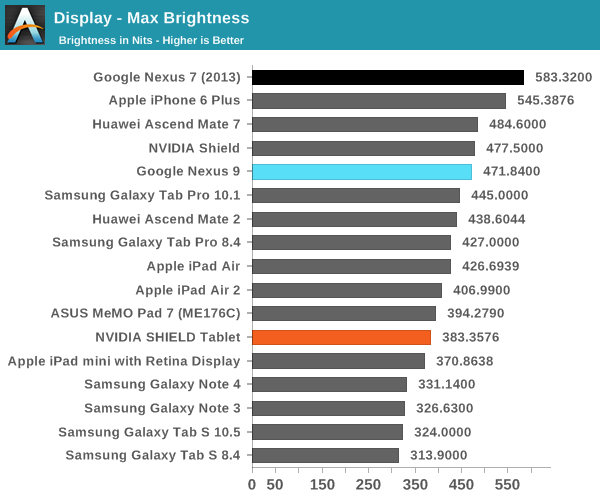
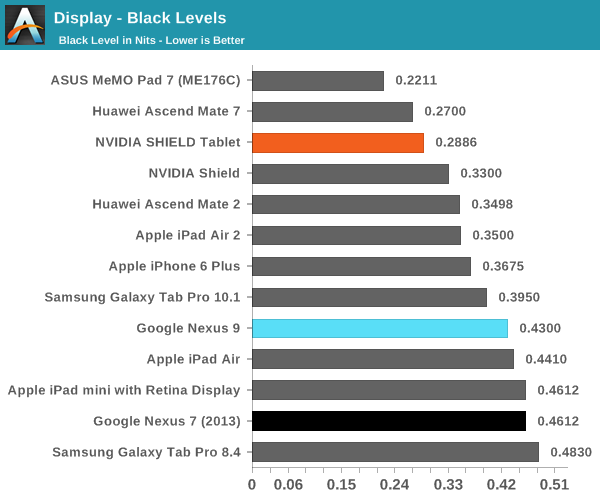
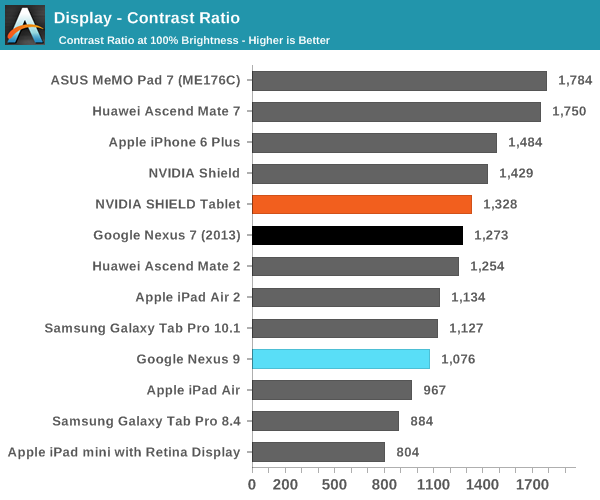
The brightness of the Nexus 9's display ends up higher than what we see with the iPad Air 2. Contrast is approximately equal to what we see in the iPad Air 2, which is good but definitely not the perfect inky blacks that one might be used to from AMOLED.
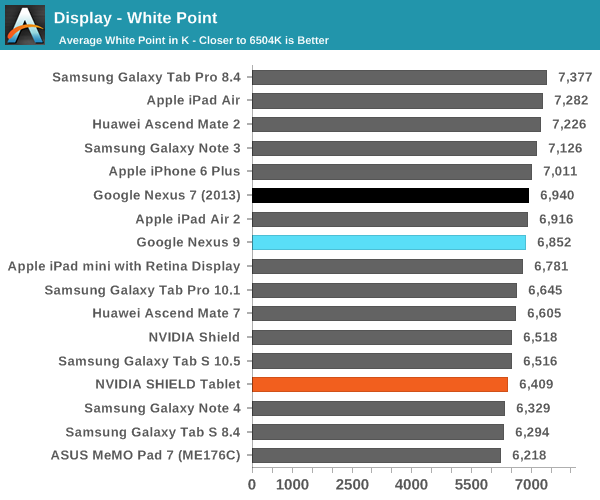
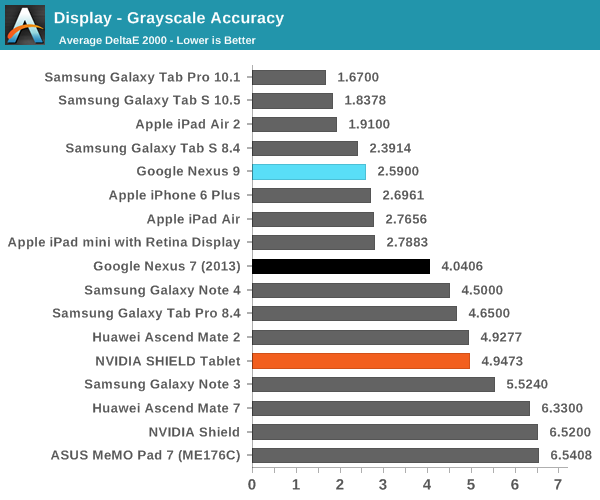
The next aspect of our display test suite is the grayscale test, which looks at the color balance and brightness of various shades of grayscale from black to white. Here, the Nexus 9 really does a great job across the board. If I were to nitpick, there is a bit of extra blue in the display but it’s really nothing worth talking about. Google does seem to consistently favor a lower contrast look when the gamma curve is dead on the mark, but on average it’s close enough to a power 2.2 curve that it doesn’t make a difference when viewing the display.
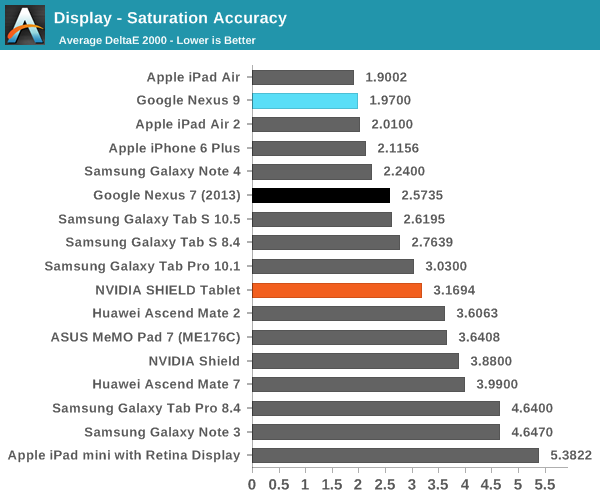
While grayscale is important, colors are really the hardest part to get right in a display. Here, the Nexus 9 does an amazing job in our saturation test. I really don’t have anything else to say here as pretty much everything is on the mark. At this point, it’s pretty clear that most Nexus devices have a strong focus on display quality, and the Nexus 9 is no exception.
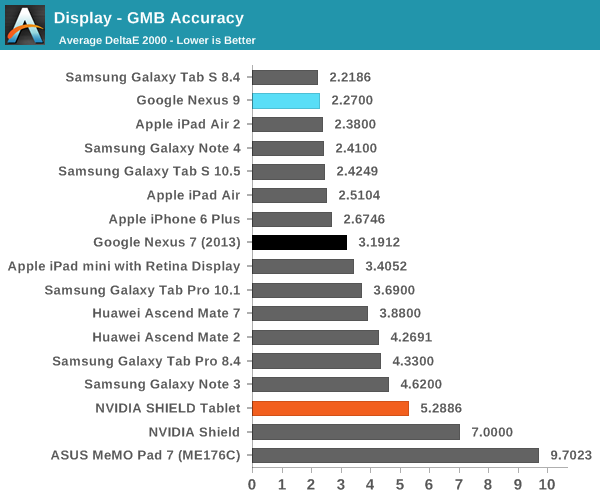
Finally, the Gretag MacBeth test shows that the Nexus 9 is quite accurate with color even outside of the basic primary and secondary colors. There shouldn’t be any issues with viewing content that has high requirements for color accuracy. Overall, the Nexus 9 display is great with only two real issues of note, namely the reflectance issue and the backlight bleed. While neither are deal-breakers, fixing these issues would make this display fall under a short list of the best mobile displays I’ve seen all year. For now, it sits just shy of that list. I definitely have to applaud Google in this case as they haven’t fallen into the trap of wider gamuts, bluer white points, dynamic contrast, and other “features” for the sake of showroom appeal.


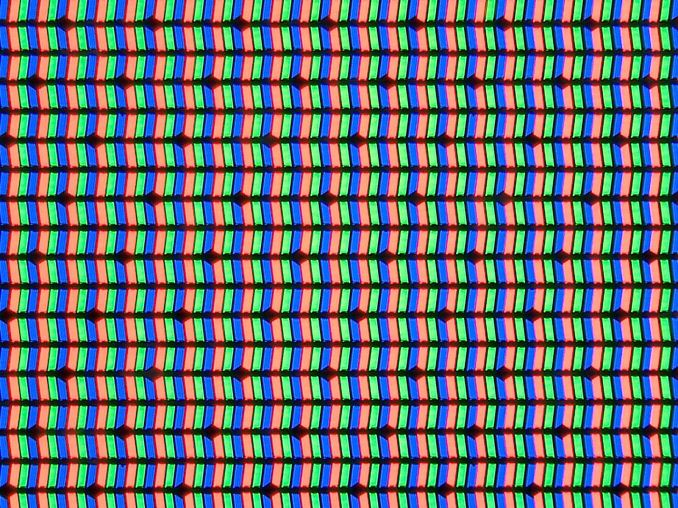

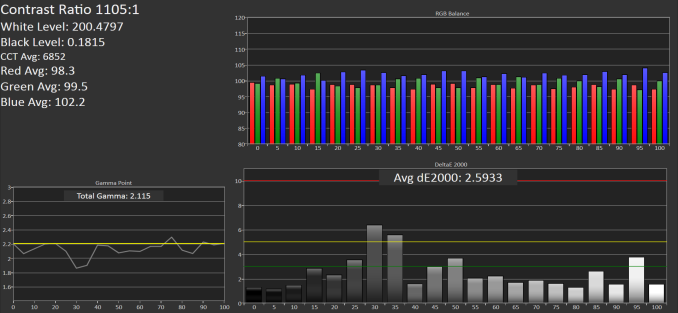
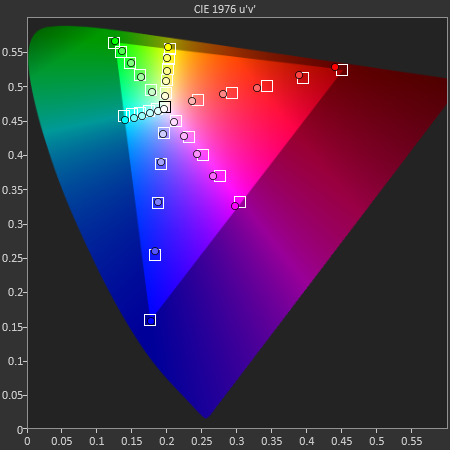
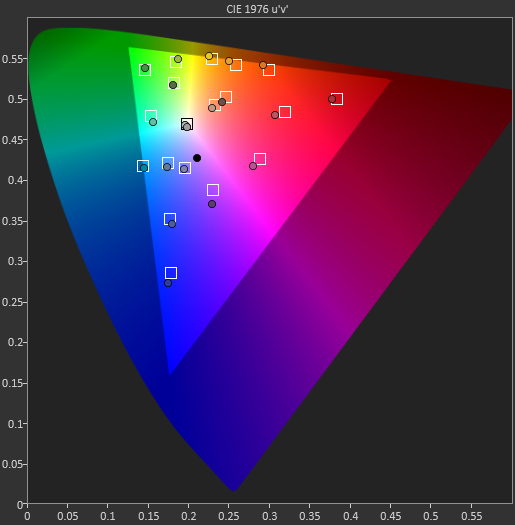








169 Comments
View All Comments
UtilityMax - Sunday, February 15, 2015 - link
I don't fully understand you comment about the SoC? You think web browser is using the hardware somewhat differently from the dedicated apps?My comment is about the fact that there is not point to have most of the dedicated apps when you have a tablet with a screen the size of a small laptop or netbook. Just fire up the web browser and use whatever web site you need. Most dedicated mobile apps exist because the screen size of a cell phone is pretty small, which can make for an awkward experience even when you pull a mobile web site though a web browser.
UtilityMax - Sunday, February 8, 2015 - link
It's not entirely true that there isn't much in the tablet space, besides Nexus 9 and Galaxy Tab S. If your pockets are deep enough, you could always get the Apple iPad Air 2. Apple gives you a well balanced tablet with great build quality, fine screen, CPU/GPU performance, and battery life. The only thing that's missing is an SD card slot, but at least there is an option a 64 or 128GB model. Personally, I ended buying a Tab S 10.5 because it was truly difficult to resist it at only $400 sale price, plus $35 for a 64GB SD card. Despite all the disappointing benchmarks, Tab S provides a pretty smooth and fluid android experience with a great screen. Battery life is the only thing that's getting on the way. Five hours of web browsing or standby is pretty disappointing.wintermute000 - Monday, February 9, 2015 - link
Sony Xperia Tablet Z2. SoC is one gen behind but if you can get it for a good price, you're laughing. Fantastic build, clean stock software, lag free.sunil5228 - Sunday, February 8, 2015 - link
Brilliant ! Esp loved the segway into the Denver CPU and dual vs quad arcitechture comparisons,very eye opening. thankyou sirbdiddytampa - Wednesday, February 11, 2015 - link
Picked one of these up a couple weeks ago and love it. It performs phenomenally well, and looks great. It's a bit heavy for its size and the thin bezel on the sides makes it difficult to hold with one hand without touching the screen, but overall its a fantastic tablet. Highly recommend it.Ozo - Monday, February 16, 2015 - link
Thanks for the lucid explanation of Denver.Any insight into why Google/HTC dropped the ball on "wireless" Qi charging? Especially when it was finally added to the Nexus phone!?!
I was set to upgrade from my Nexus 7 (2013), but no Qi = no sale. :(
Fardreit - Monday, February 23, 2015 - link
I'll be honest: I don't understand 80% of what the reviewer wrote. But the 20% that I do understand is enough for me to appreciate the conclusions drawn. I value the informed reviews here much more than those at the 'fan' websites. At Anandtech, people really know what they're talking about, even if I don't.When I'm able to follow the high-tech insults you guys sling at each other, then I know I've made progress.
flashbacck - Wednesday, February 25, 2015 - link
Does the Shield Tablet use a similar DCO? I have noticed during it has performance issues during regular use. I wonder if it's this DCO that still needs work.ahcox - Thursday, February 25, 2016 - link
What is the accuracy of the image labelled "K1-64 Die Shot Mock-up"? Is it a colorized and enhanced version of a real die photograph or is it a pure invention? That 16 * 12 array dominating the picture seems a little off to me: surely there should be structures common to each 16*2 group forming an SMX? Kepler is not a simple tiled sea of cores.